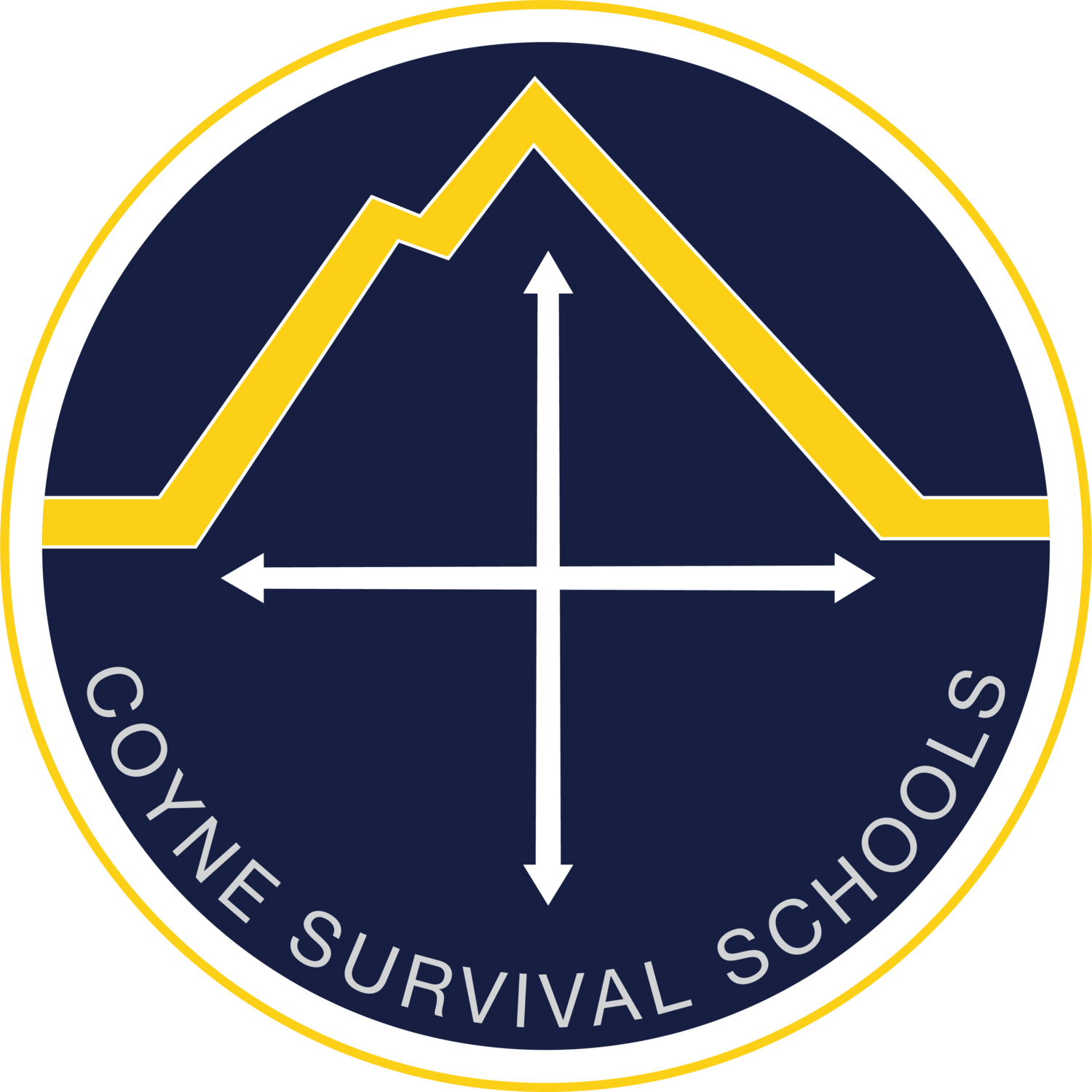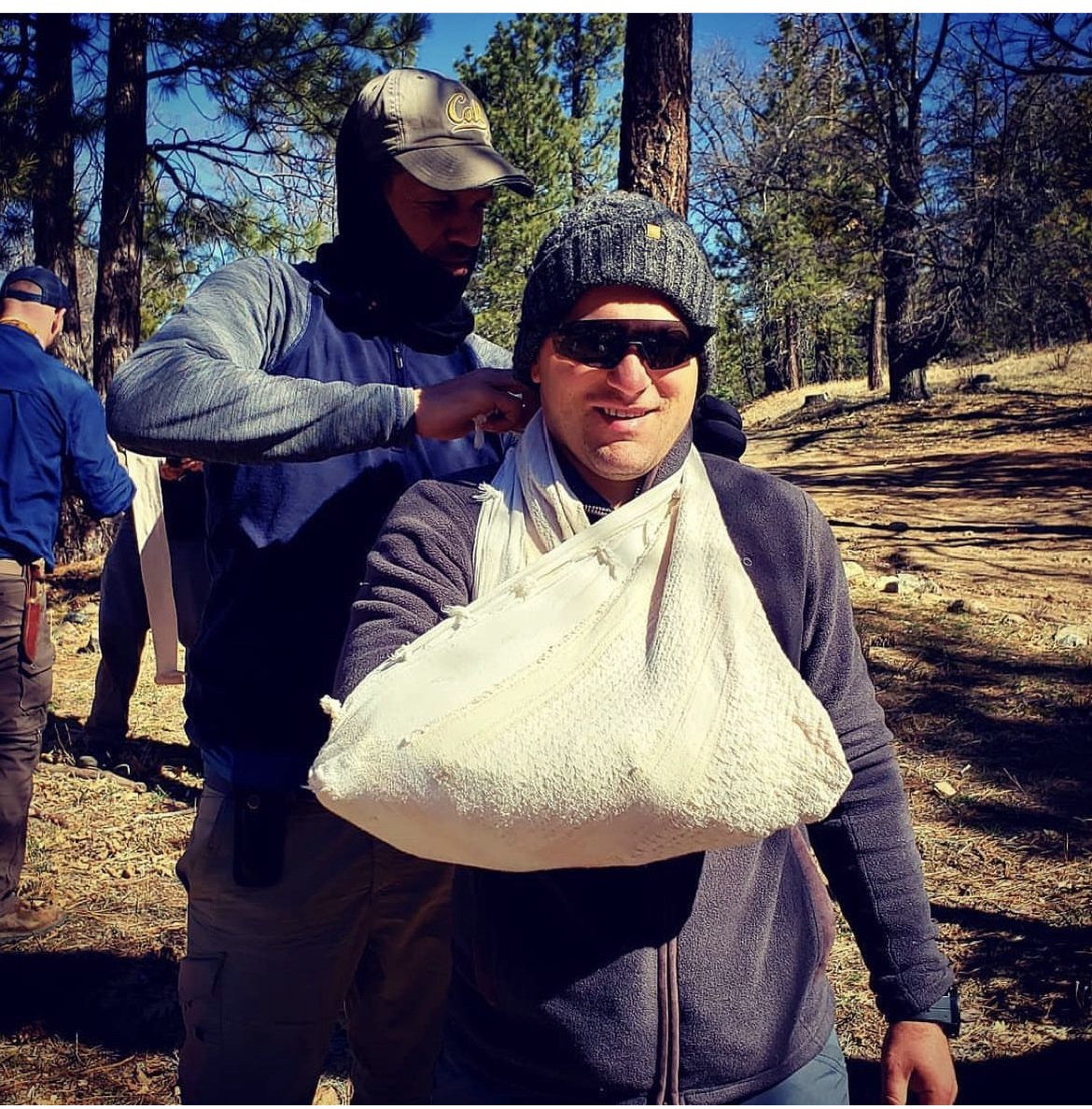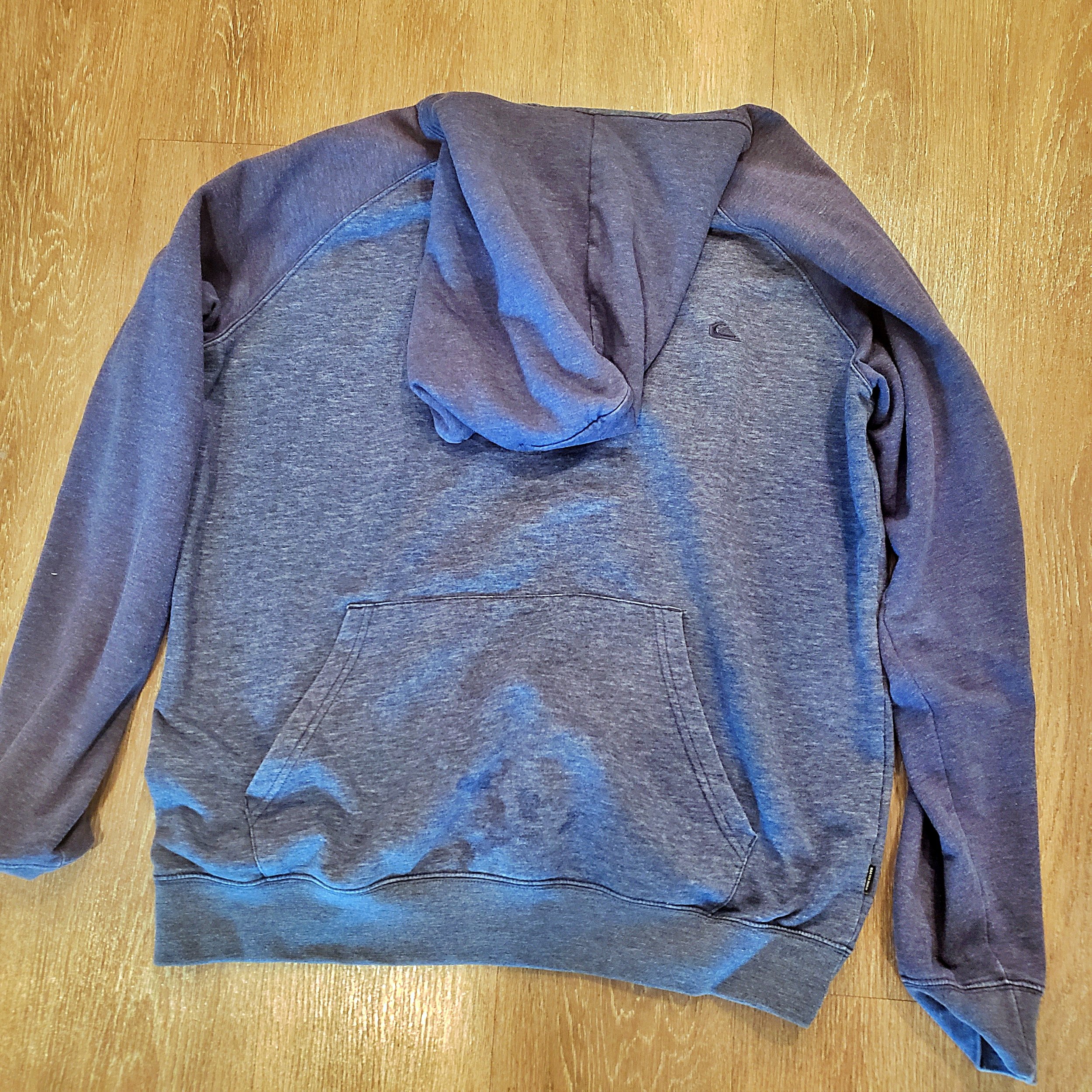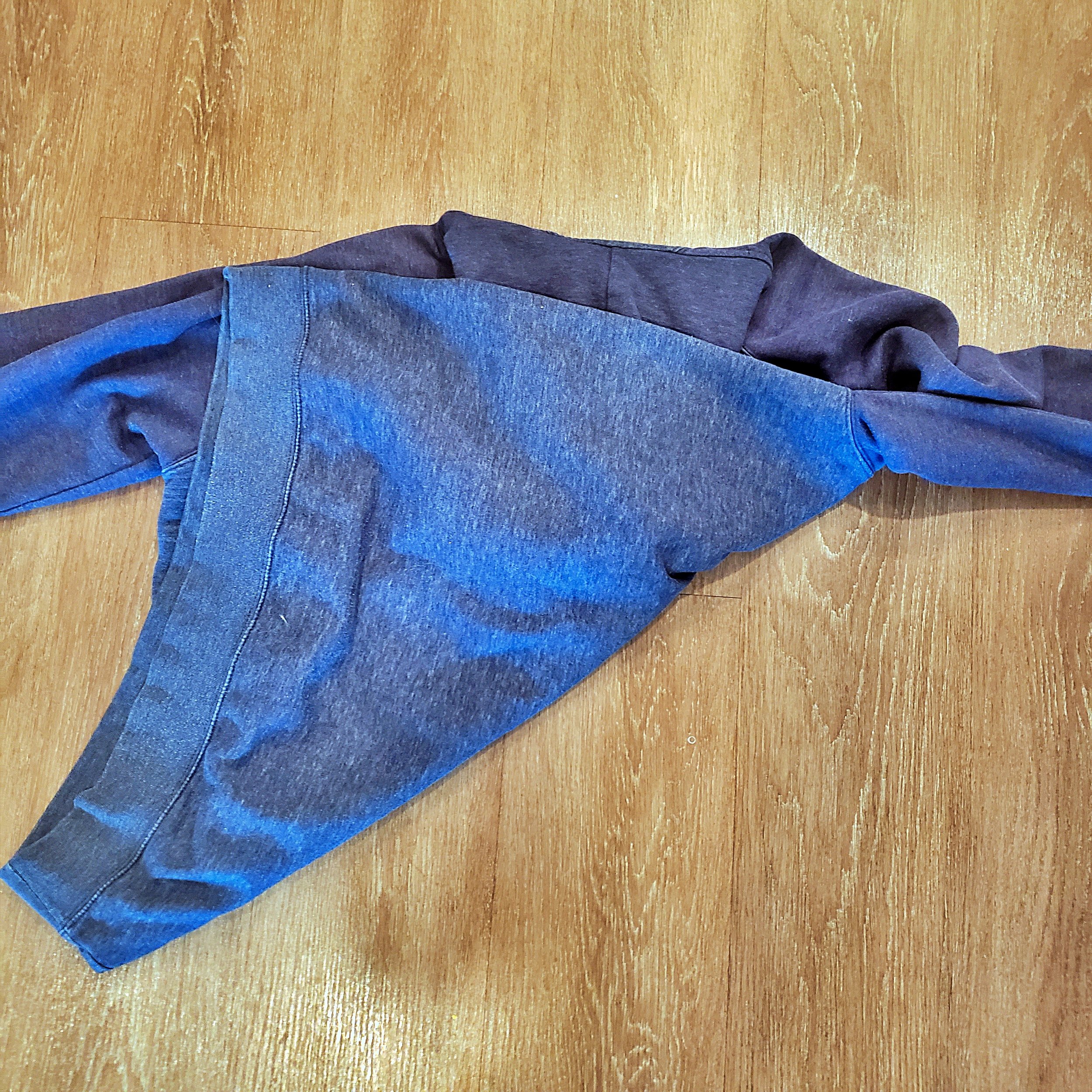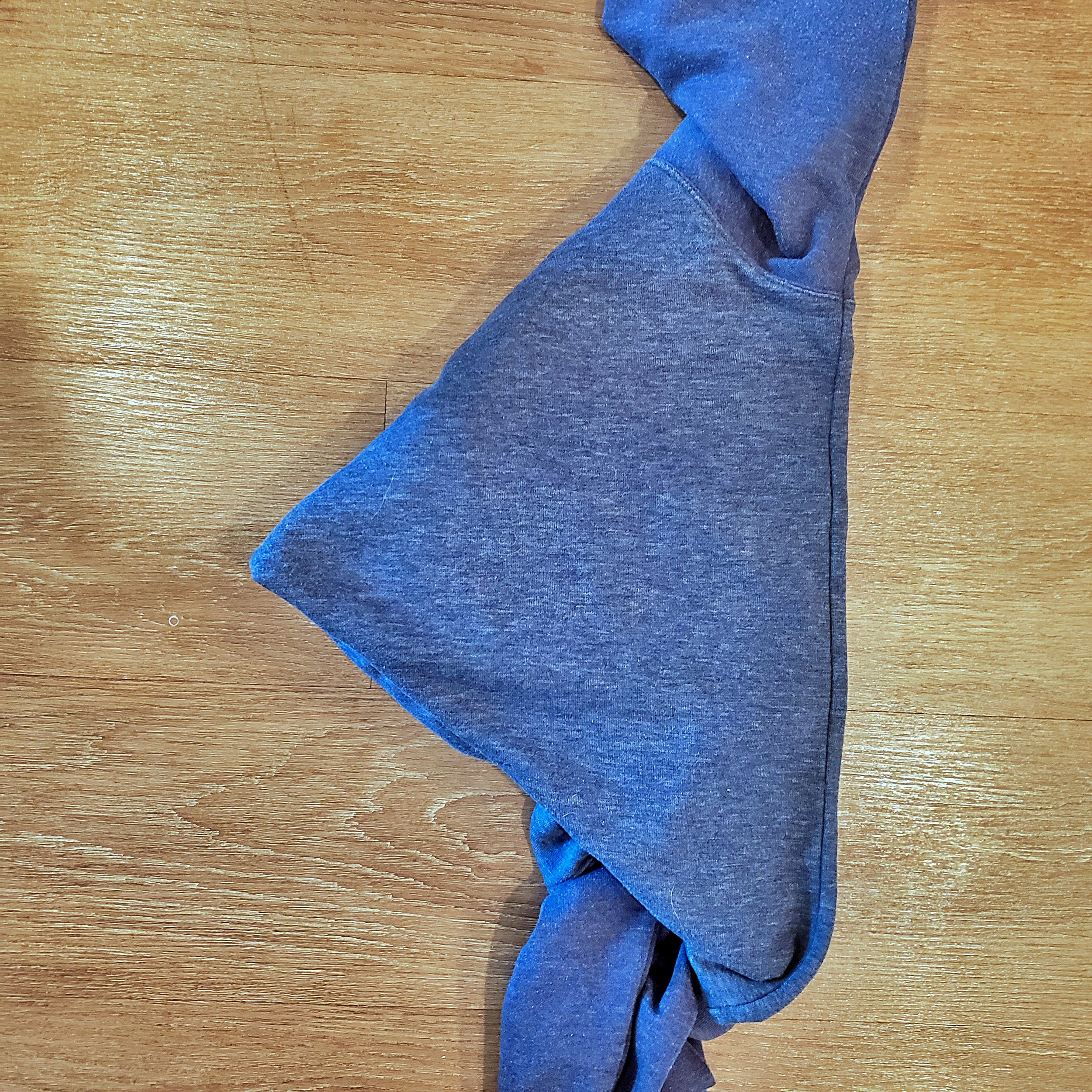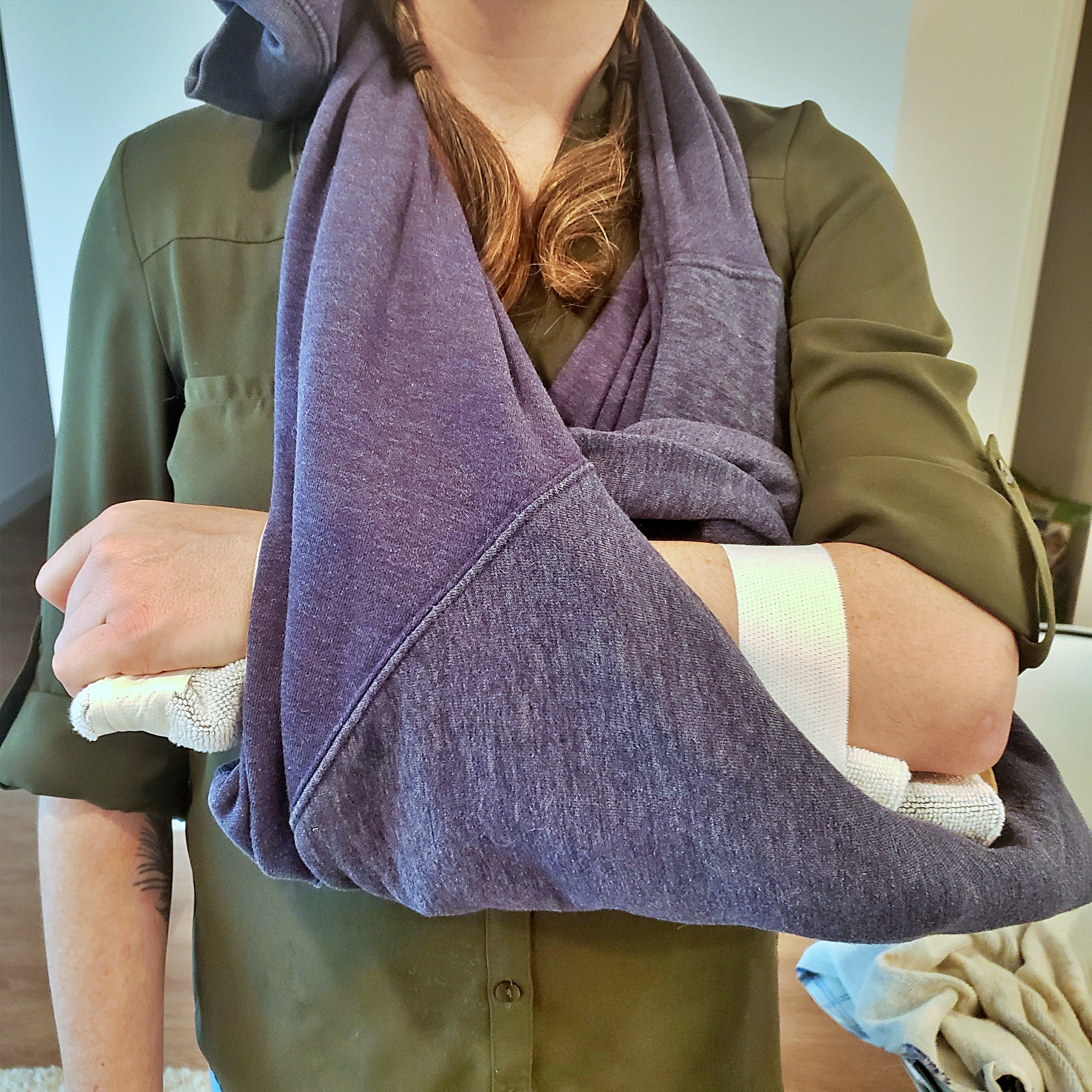It is incredibly simple to form an improvised sling in the field. A scarf or a shirt will do. No reason why a tent fly or something similar would not work as well. It's survival, be creative with your improvisation.
A splint/sling is meant perform two functions: Prevent further injury, and minimize patient pain.
Position of function: The reason you see arms placed in this particular position when secured in a sling (across the diaphragm) is because this is the POF (Position Of Function) for; broken collar bones, broken or dislocated shoulders, and/or humerus breaks. The position of function is the optimal position too place an injured and splinted/casted limb in, as it allows for optimal perfusion to the limb (oxygen rich blood flow); which in turn allows for better healing, and can assist in avoiding loss of the limb. The position of function for the forearm, wrist, leg, and ankle are obviously different than the position seen here. Again, this is for the collar bone, shoulder, and upper arm. Restoring the limb to the POF also can reduce pain, which is important in managing injuries.
You can add a "swath" which wraps around the upper arm and torso, which keeps the limb from "flapping/bouncing" out from and against the body as the patient walk. Be sure it does not restrict the full rise of the chest, so something with stretch is best (shirt material, elastic bandage, etc).
Potential problems: When placing the arm in a sling, be sure the shoulder is not pulled upward or forward, which can happen if the sling is too small or too tightly applied.
Always check a "distal" pulse (a pulse below the site of the break, before and after applying an improvised splint. A break with no pulse is a medical emergency. In the case of an arm, use the "radial pulse" the pulse found at the wrist. If there is a pulse before you splint, but not after, remove the splint and check to see if the pulse is restored.
Collarbone breaks are the most common where "tenting" occurs, a cleanly broken bone pushing on the skin from underneath causing a deformity. Be careful with the limb, and add a swath, so the bone doesn't punch through the skin.
Contorted limbs: Take a wilderness first aid or greater course, so you can learn to apply "inline traction" which can restore a pulse to a pulseless limb, as well as place a contorted limb safely back into the position of function.
Hope this helps the people.
